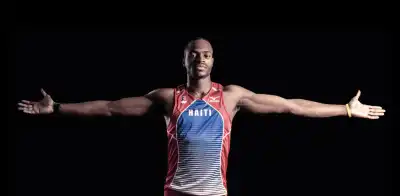A version of this story originally appeared on PeterKappus.com
In mid 2015, I came across a couple of blog posts about OKRs and got excited. I’d helped the UK’s Government Digital Service office scope their ambitions and get funding to build a platform like GOV.UK, accessible and user-friendly for all. In short order, it was to be the world’s most digital government at the time.
My wife and I had recently moved, we had an energetic threeye ar old, and I’d been working — a lot. All of this had put a strain on our relationship, my friendships, my sleep, and my physical health. In short, life had room to improve.
OKRs to the rescue… maybe?
I sat down one Saturday morning in early January with my trusty Sharpies and sticky notes to draft what felt like some sensible OKRs. Then I carefully hand-wrote them on a sheet of thick paper and hung them on the wall.
They looked like this:

Later I started doing regular check-ins, which is a formal way of saying I checked to see my progress by putting sticky notes besides the thick poster on the wall to track my progress. Eventually, I developed a simple tracking tool I made in Google Sheets, but sticky notes were a good start!
I managed to salvage “date night” (somewhat) later in the quarter but still missed most of my targets. OKRs are meant to be aspirational, right? But looking back on it, the bigger issue is that these Key Results were really initiatives in disguise. They gave me things to do, but doing those things didn’t actually demonstrate that I had reached the Objective.
When this happens, it helps to remember that OKRs describe an ideal end-state and how you will measure the degree to which you’ve “arrived.” They don’t specify how you will reach that end state. It may require dreaming up, trying, discarding, and pivoting away from many different tactics before you see any movement in your Key Results. It did not help that the OKRs were written in the third person (which isn’t very exciting), and they used words like “help” and “more” or “better.” All ambiguous terms and not quite measurable.
In fact, I often don’t use measurable terms in the Objectives themselves. Measurement is where Key Results come in. But I do expect the Objectives to have clear exciting statements. Not simply “get a little better at X” or “help out with blah.”
Even when I fell short, OKRs have changed my day-to-day life. After reviewing them, I have to respond to what wasn’t working. Throughout those early cycles with my personal OKRs, my wife and I started talking more about what would make life better. We started behaving differently; we got more sleep. That wasn’t on the list, but through talking we were able to see sleep was a major concern even if we hadn’t written it up.
Five years on, I still use personal OKRs, and my wife and friends still make fun of me. The OKRs still focus on family happiness, profitability of my business, and taking care of my health. I’ve become less worried about some of them being more task based and embraced the fact that an OKR about meditating or doing yoga X number of days is still motivational for me. My Q1 2021 personal OKRs looked like this:
O1: Full work pipeline
Sign $XX thousand of billable work
Invoice for $XX thousand of work
O2: Life feels great
Do 10 personal weekly check-ins in Q4 (How do I feel 0-5? Why? What next?) - 70% (7/10)
Average rating of 4 out of 5 on weekly personal check-ins (5 is I feel amazing and don’t need to change a thing) - 100% (avg of 4)
Identify underlying issues
Using OKRs to look unflinchingly at life at home made it easier for me to do the same at work. On my teams, I’d run a few check-ins about progress that felt a lot like traditional project status updates (e.g., “Yep, no progress, yet, but it’ll be fine… these aren’t the droids you’re looking for.”). Frankly, they were boring and they didn’t help much. I realized we needed a better way.
We experimented with a few techniques and settled on what has become my standard check-in methodology. Each time we check-in, we look at what has happened and how it makes us feel. This might sound unusual, but emotion is a powerful and often overlooked tool. Emotions are deep and subtle cues about what we’re truly noticing and acting upon. Often we can notice a feeling long before we can articulate its source. By creating space to identify our emotion, there’s often a dramatic shift in our dialog and in our actions.
Having the space to say “I’m excited because X happened” or “something doesn’t feel right and I think this OKR is in jeopardy even if I can’t quite articulate it” is a fantastic beacon that alerts the team to discuss something vital. Dig in and try to figure out the source of the discomfort and decide what to do about it. It’s less about how we feel about the possible end state and more immediate. In meetings today, we try to connect the dots between, “here’s how I feel about last week’s progress” and “what I think it means for delivering on our OKRs.” We always end with a decision about what to do next.
Trying OKRs in my personal life after helping teams to use them was an eye-opening experience. As a coach, it’s easy, or even necessary, to stay a bit disconnected from the goals that you’re helping people to create. Setting personal OKRs put me squarely in the game. I noticed that when I felt stuck or anxious to improve things, it was tempting to adopt OKRs which feel like a to-do list rather than examine the true underlying problems I was trying to solve. Setting personal OKRs made this behavior really obvious and enabled me to notice the same patterns in professional contexts. That helped me to empathize with leaders and team members alike.
OKR life lesson: Get better, not perfect.
Adopting personal OKRs requires some self-compassion as well. Maybe my most important learning was to be gentle with myself on the OKRs themselves and my process. This is something I continuously remind my clients. Whether at personal, individual, team, and organizational levels, remember that your OKRs won’t be perfect, but approached with humility, and honesty, they’ll keep making you better and better.
If you’re interested in starting our OKRs 101 course, click here.



